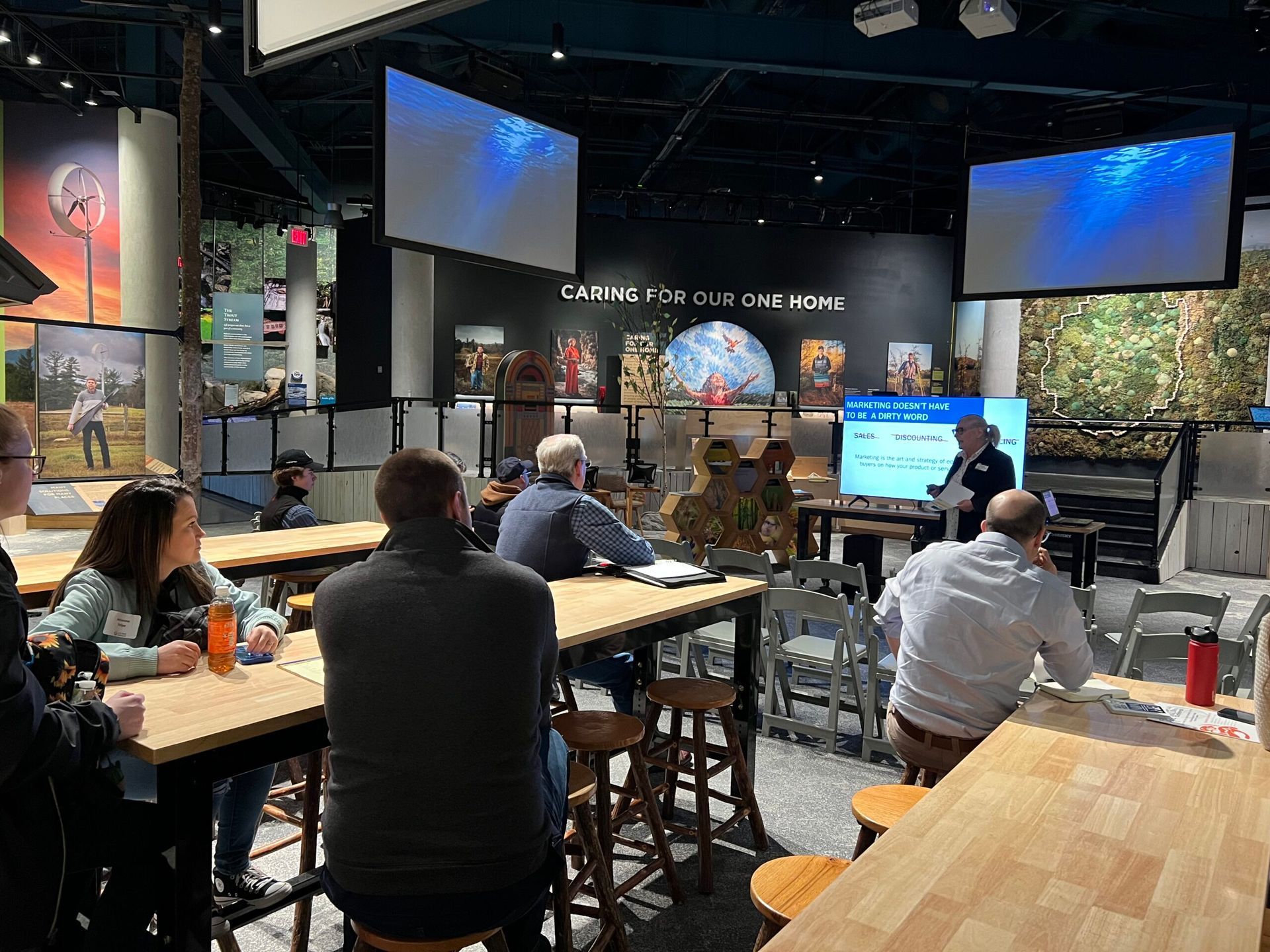Adirondack Common Ground Alliance
Sustaining the Successes of New York’s Adirondack Park
2019 Blueprint for the Blue Line
The citizens of New York State can rightly be proud of the globally significant Adirondacks, a region where people live in small rural communities, where millions of people vacation and recreate, and a place comprised of millions of acres of protected forests, waterways, and vast open space. Within is a community of energized and engaged people working together to protect the Adirondack legacy of wilderness and ensure the economic and social vibrancy of its iconic downtowns. What may be truly rare about this place in today’s polarized world is how people from different political and world views are working together to advocate for a balanced future for the Park.
Through the Adirondack Common Ground Alliance, leaders from government, business, nonprofit organizations, education, health care, and grass roots citizen groups have come together across varied interests and partisan politics to create a 25 Year Vision for the Adirondack Park that includes shared strategies and a widely endorsed agenda to solve complex challenges. Our vision for the park is one where:
“Understanding the interdependence of our environment and our economy spreads throughout our communities. Our mixture of public and private lands is the defining feature of the Park; our diverse sustainable economy increases our self-reliance. We use balanced, slightly more flexible regulation to preserve our unique landscape while enhancing the health of our communities.” (ADKfutures.org)
Efforts by individuals, government and nonprofit organizations have resulted in progress moving closer to that vision. There have been additions to the New York State Forest Preserve; recreational use has expanded; installation and use of solar energy has increased; economic opportunity in the micropolitan areas surrounding the Park has seen demonstrable improvement; and a constitutiona amendment aimed at improving broad-band access and municipal utilities was approved by the citizens of New York State. This is evidence of what a shared commitment to progress, hard work and a search for “common ground” can accomplish.
Each year the Common Ground Alliance convenes a summer forum to discuss important issues and to identify solutions. At the 2018 Common Ground Forum the people of the Adirondacks advocated for government action in four areas:
People & Places: create a livable Park with more vibrant sustainable communities.
Economic and socially vibrant communities require policies that support attracting workers and young families, locally owned businesses, job availability, communication systems, high quality affordable workforce housing, and “smart growth” downtown planning policies. We identified three priorities:
Infrastructure; ensure the health and safety of residents and visitors
- Secure approval of legislation accepting 250 or more acres for the Forest Preserve Health and Safety Land Account.
- Complete the availability of universal affordable broad band, its integration with cell service and associated services that reduce down time for all within the Adirondack region.
- Build on Governor Cuomo’s Executive Order on Age Friendly Communities to develop policies and infrastructure to support quality of life for the elderly within the special environment of the Adirondack Park.
Workforce Development; minimize wage differential with downstate areas, and create jobs
- Create a tax incentive structure for student debt forgiveness for those willing to settle in the Adirondack region for a period of five years.
- Create additional incentives to and information programs about the STAR Credit system for those willing to remain, relocate, or retire in the region.
- Through public-private partnerships, create affordable and accessible high-intensity skills training programs to prepare youth for successful workforce entry in key regional industries.
Housing
- Create a 2–year task force to develop a roadmap to address the growing challenges of access to quality affordable housing through innovative programs that incentivize best practice building and renovation.
Climate Change & Clean Energy: develop a global model for action
Climate change and subsequent policy responses are perhaps the most critical issues facing the planet today. The interdependence of ecological systems and human communities is increasingly laid bare as the impacts of climate change become more evident year by year.
- Working with federal agency partners, declare the Adirondack Park a high priority region for rapid uptake of clean energy infrastructure and climate resilience planning. This includes developing protocols and a funding stream to use the Adirondacks as a climate friendly demonstration site for conservation landscapes around the world.
- Develop green transportation systems focused on using clean electricity from the Park’s many renewable energy resources, with incentives to expand EV charging stations and electric vehicle fleets for efficiently transporting workforce, visitors and residents.
- Update APA policy and regulations to institutionalize efforts to mitigate and adapt to climate change impacts and support Park-appropriate clean energy infrastructure.
Private Land Stewardship: support long term land management
Policies and incentives that support sustainable land management practices, including private stewardship, forest management, carbon sequestration, property tax reforms, and conservation design principles are ever more important as rural land areas are increasingly under pressure from human development and impact. The benefits go well beyond the borders of the Adirondack Park to the state as a whole.
- Institute the positions outlined in the refined Conservation Design bill (A5451) developed by a diverse group of stakeholders in 2018 either through executive or legislative action.
- Pass legislation that would assure a tax system that incentivizes best forest management practices, that recognizes 3rd party certification, promotes practices that provide environmental services, and protects the local tax base.
- Establish a cost share program for forest practices aimed at mitigating climate change, enhancing wildlife habitat and reducing the impacts of invasive species.
- Develop laws and regulations that give preference to procurement of forest products from sustainable sources that support jobs and economic development within the state of New York.
State Land Stewardship, Planning and Resources: safeguard our natural resources and provide world-class visitor experiences.
As more people visit the region, it becomes increasingly critical to maintain the integrity of the Park’s iconic wild places. Managing the impact of backcountry visitation, accommodating new recreational uses, addressing high use, and implementing recommendations regarding the Adirondack Park State Land Master Plan (APSLMP) are high priorities.
- Working with NYS DEC, establish measures to define and manage carrying capacity of trails and camp sites, clarify parking availability, and implement appropriate enforcement actions to assure the safety of pedestrians and vehicular passengers,
- Revise the APSLMP to incorporate Complex Planning as a way redistributing visitation patterns, better integrate “front-country”/ “back country” uses and accommodate new recreation uses.
- Increase the number of Forest Rangers and other Forest Preserve managers in response to the recent additions to the Forest Preserve.
This document is respectfully submitted on behalf of the diverse group of citizens and organizations of the Adirondacks. It reflects the thoughtful considerations of the 200+ people who participated in working groups at the 2018 Common Ground Alliance. We make these recommendations to the State and reinforce the value of the 6-million-acre resource for the people of the State of New York.
The post 2019 Blueprint for the Blue Line appeared first on Common Ground Alliance.


